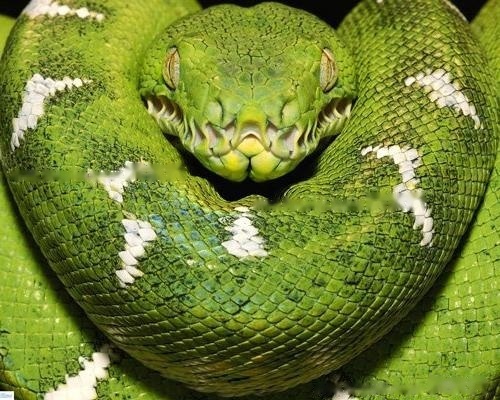Do snakes have genders? It seems that I have never heard of it. In fact, snakes are the same as other animals. They all produce the next generation through reproduction, which is used to ensure life. continue. There are also male and female snakes, but most people can't tell the difference! So how to distinguish the difference between snakes? The following editor will teach you a simple method!

< Gender probes determine the sex of a snake by searching for the male snake's hemipenis (half of a hemipenis, the name for the entire reproductive organ). In male snakes, the bifurcated reproductive organs are located just behind the cloaca (excretion hole) and extend all the way to the tail. When not in use, it turns inside out to stay stationary, like two bags placed side by side. This causes the tail of the adult male snake to appear several inches thicker and longer than the female's after the cloaca.
With the assistance of another person, grab the snake by the body (belly up) and insert the probe under the large cloacal ventral scales towards the tail. The tail is slightly bent back to make it easier to spot the cloaca. Probe gradually with the probe around (while slowly turning the probe to make it easier to advance forward) to find any acupuncture point just on either side of the midline of the tail. A lubricant like KY Gel, or even plain water, will make insertion of the probe easier. When probing, slowly adjust the angle of the probe in several different directions until you find the acupuncture point, then try to slide the probe deeper towards the tip of the tail. The probe can only be advanced with very little pressure when searching for the hemipenis. Too much pressure will puncture and injure body tissue.
Because the hemipenis is elastic, there is a slight elasticity when the probe is fully inserted into the male organ. The same procedure on the female produces a more blunt sudden stop because the probe only encounters a fleshy wall at her tail. King snakes usually bleed a little when they are detected, but that's okay, no damage is done.
In the case of a male snake, the probe will slide down into one of the hemipenis, deeper than the width of the tail. In the case of a small corn snake, the hemipenis is about 3/8 to 1/2 inch deep. The probe is barely penetrating (only 1/16-1/8 inch) into the scent glands of female corn snakes. An adult male corn snake 3 feet or longer will have a probing depth of 2 to 3 inches for the hemipenis. By comparison, adult female corn snakes can probe only about 1/4 of an inch.

Subscribe to Newsletter
Professional platform for pets, dogs and cats.
![[Dog Training 5] The training method of pet dog dining etiquette](/static/img/12192/12192_1.jpg)




